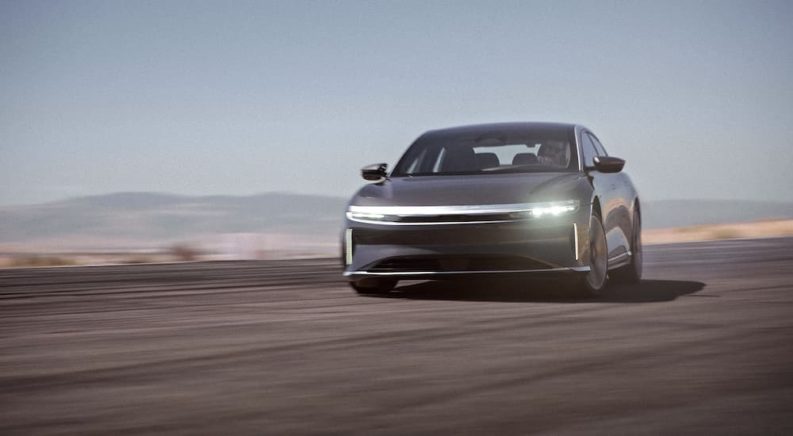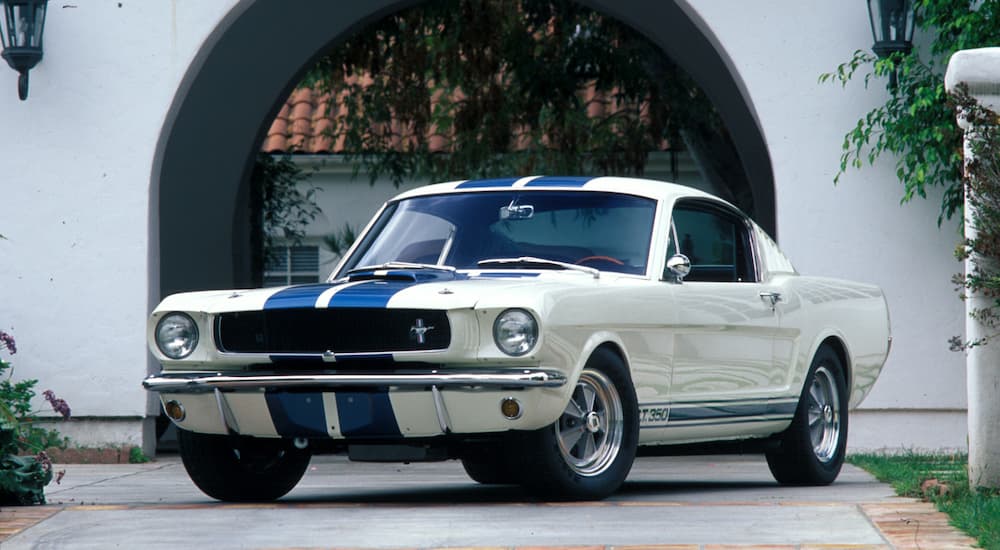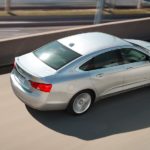Everything in the observable universe is in constant motion, and much of that motion can be perceived as sound. The air we breathe, flowing in and out of our lungs, rising or falling along hot or cold surfaces, streaming through a door left ajar, is constantly abuzz with the sounds of its own motion and of the world around us. Everything we’re in contact with, uninterrupted by a vacuum, is reaching out to touch us via minute variations in pressure, molecules swaying back and forth or jittering up and down, the vibrations transformed into neurological signals by microscopic hairs in our ears and perceived by our brains as sound. For the vast majority of us, hearing is a critical and inescapable element of the human experience, leading to an inevitable conflict between EVs and the car enthusiast’s desire for sound.
But why is this conflict inevitable? Why is sound so important to us in general and in motor vehicles? How are EVs fundamentally changing the aural aspect of the automotive experience, and what does the future of vehicular noise sound like? The answers, like most things to do with sound, are deceptively complex.
The Sickening Sound of Silence
Sound can send a shiver down your spine or set your hairs on end. Maybe it triggers your fight-or-flight or calms you down. The emotional impact of noise is subtle yet profound, to the point that the exact same sound with different contextual information can trigger powerful and wildly different responses. Sound is critically important as a means for communication and understanding one’s surroundings, and the brain actively works to adjust its perception to either avoid overwhelming us or to ensure that we’re picking up any useful information that we can.
The concept of “deafening silence” relates to the quiet that immediately follows a period of sustained noise. A brain that’s adjusted to a high decibel environment takes a moment to adjust to the sudden calm, causing the silence to feel more profound than usual and immediately catch our attention. The quietest rooms on Earth, anechoic chambers, take this to another level by blocking out all theoretically perceivable sounds and preventing any echoes from reaching your ears. As the brain adjusts, one gradually begins to hear their own heartbeat, the blood flowing through their veins, and every grind and squeak of their joints. The brain, continually seeking input that it isn’t finding, sends neural signals to increase sensitivity which are so powerful they create internal feedback, leading to hallucinated sounds and a profound sense of ringing that ultimately drives people to escape from these unnatural environments. Our evolution is literally incapable of dealing with a soundless environment.
When it comes to automobiles, interior volume levels of negative decibels aren’t required for the experience to be disconcerting. Rolls-Royce found this out the hard way during the development of their second-generation Ghost. Focused efforts to minimize interior noise, including the use of an aluminum frame and hundreds of pounds of sound-absorbing materials, they created a space so quiet that it was disorienting, to the point of causing motion sickness for passengers whose brains could not reconcile the sensation of motion with the silence. Rolls-Royce had to add sound, in part by redesigning the trunk and rear seats to resonate at a low frequency during driving to make the super-luxury experience more comfortable.
This goes a long way to explain why sound matters in general. But the reason why sound matters to enthusiasts isn’t anything close to avoiding motion sickness. In fact, it’s not about avoiding physical discomfort at all.

Hear Me Roar!
Did you know that electric vehicles were popular before the 2020s? They were, in fact, popular over a hundred years ago! Many of the first automobiles ran on electric power, but they fell out of favor by the 1930s. Imagine how different the world would be if they’d remained competitive! Alas, in the early 20th century, tremendously loud and raucous internal combustion-powered vehicles were marketed as the brand of strong, wealthy men who didn’t care about making a scene, while quiet electric vehicles were labeled dainty and feminine – an absolute death knell in an era where equality for mankind really meant “man”-kind.
The association of loud cars with wealth and performance never went away. Porsche’s legendary air-cooled engines were renowned for their sound, with tones similar to a lion’s roar that produced a powerful emotional response that went hand in hand with top-tier performance models. Test groups viewing two brief videos of an F1 race perceived cars to be moving slower in one of the videos, even though the footage was the same. The only difference was that the video had its audio tuned 5 dB quieter than the other! I asked my father why he thinks sound matters, and his response tells the story: “Sound means power! Vroom! Rah! Speed!” (I may have asked after a couple of drinks).
From the throaty rumble of American V8s to the unearthly howl of Italian V12s, it has become ingrained in us that a big noise is the hallmark of something fast and powerful, of a special status symbol that we aspire to. When driving such a vehicle, the car becomes an instrument in a symphony orchestra, and the driver is the conductor. The sound is a visceral confirmation that we’re in control and adds an enormous thrill that would otherwise disappear, like muting the TV in the middle of a horror film.
We’ve definitely touched on something here. Nearly 100 years of marketing and the emotional way that sound influences our experience has created an association between engine noise and the thrill of acceleration that automotive enthusiasts crave!
But that can’t be the whole story. Objectively speaking, the performance numbers of loud, rumbly V8s from the ’70s are kind of crap against turbocharged 4 and 6-cylinder engines of today. The quickest production vehicles on the planet are quiet EVs and hybrids. The fondness for automotive noise may be rooted in an association with power and speed, but what keeps people coming back for more now that this is no longer strictly true?
Country Roads, Take Me Home
The answer, I think, is nostalgia. That wonderful, terrible emotion, bittersweet to the core with incredible power, nostalgia helps us draw connections between who we are today and who we used to be, often showing us the path to the people we want to become. The alluring sweetness of a past that can never be ours again and an associated bitterness surrounding that truth, motivating us to return to the present and move forward, adds value to anything reminiscent of the good days gone by. The experience of this feeling, so deep and profound, creates bonds between family and friends when we’re young. Then, when we’ve grown up, objects of shared nostalgic affection form the nucleus of communities that are as strong as any family.
When nostalgia is associated with a sound, it is especially powerful. Listening is already a fundamentally emotional activity, and since sound is so pervasive, everyone is bound to have lengthy soundtracks to take them back to their youth. For many car enthusiasts, that youth was spent with Dad (or Mom, or a favorite Uncle, or whomever) in a garage, on trails, or at a racetrack, working on and bonding over the prized family project car (even if it was also the daily commuter or a working tractor).
When a 50-year-old American V8 roars to life, it isn’t declaring itself the fastest, most powerful block on the block; not anymore, at least. But the ragged rumble is like a siren song for the thousands, if not millions, of people who grew up around that sound. Throw in the smell of pre-regulations exhaust for a double hit! That doesn’t mean there’s anything wrong with a quiet car, but the intoxicating positive nostalgia that comes from old-school motors simply can’t be replaced, and classic car fan clubs around the world are part of the proof.
Does Anybody Have a Clairvoyant Ear?
We often think about what the future looks and feels like, from aesthetics to science to politics, especially in art forms such as cinema. Usually, it can be summarized as “today, but worse, except for the tech.” But what you may not have thought much about while watching Blade Runner, Soylent Green, or Total Recall was what the future sounds like.
Despite this, the sound of the future is nearly here! It might seem incredible, but it’s true. With the rise of electric vehicles, noise has been recognized as a necessity in motor vehicles. There’s an obvious safety benefit to pedestrians and cyclists who may not realize a vehicle is approaching, but there’s also a benefit to drivers who associate noise with speed and therefore drive faster without audible feedback. I’m not sure about other nations, but the USA has regulated that EVs produce a minimum threshold of noise for safety purposes, and it just seems common sense that we need EVs to be louder than a whisper. With no natural source of noise to tap into, it’s fallen upon individual manufacturers to decide how they want to achieve that sound.
Pumping artificial engine noise is nothing new. Porsche, faced with enormous backlash after the inevitable and performance-driven switch to water-cooled engines resulted in a significant change in the aural character of their iconic vehicles, quickly pivoted to this technique so that the driver could still experience the Porsche “lion’s roar.” Enthusiasts have griped about this sort of thing too, but it takes a serious effort to recreate the sounds of classic cars in a natural way (just look at what Chevy had to do to perfect the new Z06 exhaust note), so at least we get something, right?
For EVs, some companies are simply taking this to a new level. Audi is particularly conservative, viewing their EVs as technical devices (not musical instruments), and Jaguar has tried to make people comfortable with the sound of their EVs by keeping it familiar by blending motorcycle and V8 exhaust notes. Ford, too, has leaned towards a traditional “fake ICE” sound (though the Mustang Mach E’s use of sounds from power lines, guitars, and Formula1 engines makes it sound like an electronic spaceship, according to TIME).
Others have abandoned the desire to act as though there are pistons in a vehicle that doesn’t have them. The Nissan LEAF has a sing-song quality to its note, and GM has experimented with guitar, piano, and didgeridoo tones for their Ultium platform vehicles! The most audacious has been BMW, who hired composer Hans Zimmer to develop the sound of the i4. I haven’t heard it yet myself, but the description makes me think of the classic THX wall of sound – could that be the sound of the roadway of the future?
Like Spielberg and his team on Jurassic Park, deciding for the entire world what a Tyrannosaurus Rex sounds like, automakers are deciding today what our roads will sound like tomorrow. Some have even suggested that customizable tones or tunes could be available. Think of the era of smartphones and personalized ringtones. Now think of city streets constantly blaring with everyone’s chosen “drive tone”! It’s enough to make one recommend that EVs be banned as a concept and to move to the country just to be safe.
Hold the Pitchforks, Grab a Headset
But today, virtually everyone’s smartphones are kept on vibrate or silent. Yes, the world was noisier for a while, but we collectively decided that was embarrassing, and things have settled down, haven’t they? Presumably, the same would happen for EVs if it came to that.
Perhaps one day, long after non-electrified powertrains have entirely left showroom floors, the associations between noise and power or speed will be gone as well. After all, an entire generation is about to grow up knowing the Model S Plaid as the quickest car on Earth! It’ll take more time, but eventually, the nostalgic connection to combustion will be as antiquated as Roaring ’20s nostalgia is today. Technology evolves quickly, and as a species, we adapt to it, and we’ll adapt to this, too.
But human evolution is slow, very slow. In no conceivable future will the primal connection between sound and our deepest emotions be lost. And so, although a roaring engine may not communicate to anybody that a car is fast or even powerful in 20 years, though it may bring no fond memories to mind for any driver in the 23rd century, it will always hold a place in the hearts of automotive enthusiasts. It will always set hairs on end and bring smiles to faces, adding a level of excitement that has no practical business existing in subpar powertrains. It will always be the nucleus of a community of people who acknowledge and share their love of this fact. It is ultimately because of human nature that the rumble and howl of the ICE will echo on forever.





